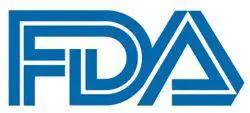News
Article
FDA Approves Frontline Amivantamab Plus Chemo for EGFR Exon 20 Insertion+ NSCLC
Author(s):
The FDA has approved amivantamab plus chemotherapy for the frontline treatment of select patients with EGFR exon 20 insertion+ non–small cell lung cancer.
FDA

The FDA has approved amivantamab-vmjw (Rybrevant) plus carboplatin and pemetrexed for the frontline treatment of patients with locally advanced or metastatic non–small cell lung cancer (NSCLC) harboring EGFR exon 20 insertion mutations, as detected by an FDA-approved test.1,2
The regulatory agency also granted full approval to amivantamab in adult patients with locally advanced or metastatic NSCLC harboring EGFR exon 20 insertion mutations who experienced progression on or following platinum-based chemotherapy.
Data from the phase 3 PAPILLON study (NCT04538664) showed that amivantamab plus chemotherapy (n = 153) significantly improved progression-free survival (PFS) vs chemotherapy alone (n = 155), at a median of 11.4 months (95% CI, 9.8-13.7) vs 6.7 months (95% CI, 5.6-7.3), respectively (HR, 0.40; 95% CI, 0.30-0.53; P < .0001).
The overall survival (OS) data were immature at the current analysis, with only 44% of prespecified deaths for the final analysis reported; however, no trend toward a detriment with amivantamab/chemotherapy has been observed.
Understanding PAPILLON: Eligibility, Treatment, Objectives
The randomized, open-label, multicenter study included patients with treatment-naive, locally advanced or metastatic NSCLC harboring EGFR exon 20 insertion mutations who had measurable disease by RECIST v1.1 criteria. Patients were required to have an ECOG performance status of 0 or 1 and acceptable organ and bone marrow function.
Notably, those with brain metastases at the time of screening were allowed to enroll if they were definitively treated, clinically stable, asymptomatic, and had not been receiving corticosteroids for at least 2 weeks before undergoing randomization.
Those with a history of, or active, interstitial lung disease were excluded.
Study participants (n = 308) were randomly assigned 1:1 to receive amivantamab plus chemotherapy or chemotherapy alone.
Amivantamab was given intravenously (IV) at a dose of 1400 mg for those who weighed under 80 kg or 1750 mg in those who weighed 80 kg or more once weekly for 4 weeks and then every 3 weeks at 1750 mg or 2100 mg, respectively, starting at week 7. The agent was continued until disease progression or intolerable toxicity. Moreover, IV carboplatin was given at area under the concentration-time curve 5 mg/mL/min once every 3 weeks for up to 12 weeks, and IV pemetrexed was given at 500 mg/m2 once every 3 weeks until progressive disease or intolerable toxicity.
Key stratification factors were performance status (0 vs 1) and the presence of prior brain metastases (yes vs no).
Those in the chemotherapy-alone arm who experienced disease progression were able to crossover to received amivantamab monotherapy.
PFS served as the trial's primary efficacy outcome measure, and was evaluated by blinded independent central review. Other efficacy outcome measures included overall response rate, duration of response, and OS.
The median patient age was 62 years (range, 27-92), and 40% of patients were aged 65 years or older. Fifty-eight percent of patients were female and most patients were Asian (61%) and not Hispanic or Latino (93%). In terms of ECOG performance status at baseline, 35% had a status of 0, and 65% had a status of 1. The majority (84%) of patients had stage IV disease at the time of their initial diagnosis. Additionally, 58% of patients were never smokers and 23% had a history of brain metastases.
Additional Efficacy Data
The addition of amivantamab to chemotherapy resulted in an ORR of 67% (95% CI, 59%-75%) vs 36% (95% CI, 29%-44%) with chemotherapy alone. Of those who responded in the amivantamab arm, 4% had a complete response (CR) and 63% had a partial response (PR); these respective rates in the chemotherapy-alone arm were 1% and 36%. The median duration of response with amivantamab plus chemotherapy was 10.1 months (95% CI, 8.5-13.9) vs 5.6 months (95% CI, 4.4-6.9) with chemotherapy alone.
Safety Findings
The median exposure to amivantamab plus chemotherapy was 9.7 months (range, 0-26.9) and the median exposure to chemotherapy alone was 6.7 months (range, 0-25.3).
Thirty-seven percent of patients who received the amivantamab combination experienced serious adverse reactions. Moreover, 4.6% of patients experienced fatal adverse reactions in the form of pneumonia, cerebrovascular accident, cardiorespiratory arrest, COVID-19, sepsis, and death not otherwise specified.
Dose reductions or interruptions of amivantamab due to an adverse effect (AE) were required for 36% and 64% of patients, respectively. Eleven percent of patients permanently discontinued amivantamab because of an AE.
In the amivantamab/chemotherapy arm, the most common AEs experiened by at least 10% of patients included rash (all grade, 90%; grade 3/4, 19%), nail toxicity (62%; 7%), dry skin (17%; 0%), stomatitis (43%; 4%), constipation (40%; 0%), nausea (36%; 0.7%), vomiting (21%; 3.3%), diarrhea (21%; 3%), hemorrhoids (12%; 1%), abdominal pain (11%; 0.7%), infusion-related reaction (42%; 1.3%), fatigue (42%; 6%), edema (40%; 1.3%), pyrexia (17%; 0%), reduced appetite (36%; 2.6%), COVID-19 (24%; 2%), pneumonia (13%; 5%), hemorrhage (18%; 0.7%), cough (17%; 0%), dyspnea (11%; 1.3%), weight decreased (14%; 0.7%), dizziness (11%; 0%), and insomnia (11%; 0%).
References
- FDA approves amivantamab-vmjw for EGFR exon 20 insertion-mutation non-small cell lung cancer indications. FDA. March 1, 2024. Accessed March 1, 2024. https://www.fda.gov/drugs/resources-information-approved-drugs/fda-approves-amivantamab-vmjw-egfr-exon-20-insertion-mutated-non-small-cell-lung-cancer-indications
- Rybrevant. Prescribing information. Janssen Biotech, Inc.; 2024. Accessed March 1, 2024. https://www.accessdata.fda.gov/drugsatfda_docs/label/2024/761210s003lbl.pdf









